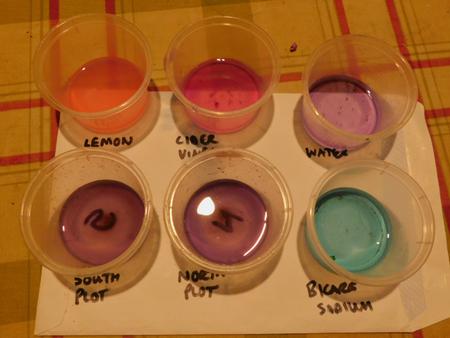

 3
3




Paul Fookes wrote:Our soil is compacted clay over a plough pan so nothing is going to get through that sucker. Parts have zero organic matter in it. We have had a lot of success with using worms to do our spade work. Mow low as you have done and then cover with cardboard and meadow hay, grass clippings and any other compostible material. Make sure each layer is wet (probably no issue for where you are?) seed with what you want, and give the worms time to do their work. There is some good studies showing that some worms will take nutrients down a meter or two and more (3 - 6 feet). They increase water penetration 10 fold.
How Permies works: https://permies.com/wiki/34193/permies-works-links-threads
My projects on Skye: The tree field, Growing and landracing, perennial polycultures, "Don't dream it - be it! "
 8
8




Nancy Reading wrote:
I've optimistically sowed some areas that I hadn't mown in the summer with annual rye and vetch. First I mowed the areas as close as I could, then raked off the loose grass and sowed the seed really thickly. There were three separate patches. One of them I managed to rake back over again, the others I didn't get a chance to get back down to. I could see the crows having a great time there, so wasn't expecting anything much to survive. This was the case for the two areas not raked; there is some seedling growth, but I'm having to look hard for it. In the area that was raked however, there does seem to be quite a bit of vetch and rye grass coming up. It looks rather patchy - one area will be thick with vetch, another thick with grass.
The idea is that the annual rye will outcompete the meadowgrass in the spring, but we'll see if there is any success with this.












 3
3




How Permies works: https://permies.com/wiki/34193/permies-works-links-threads
My projects on Skye: The tree field, Growing and landracing, perennial polycultures, "Don't dream it - be it! "

 7
7




Nancy Reading wrote:Jan, Thanks for introducing my to the homi (I had to look it up ( Homi, ) It looks like a useful tool. It reminds me that I have a hand plough somewhere. I'll have to find it and see whether it may be of use for me in this area.
Failure is a sign of activity and learning. It had nothing to do with under achievement
I never want to have a team member who has never failed - They are not doing!! 👍












 6
6






How Permies works: https://permies.com/wiki/34193/permies-works-links-threads
My projects on Skye: The tree field, Growing and landracing, perennial polycultures, "Don't dream it - be it! "












 8
8




How Permies works: https://permies.com/wiki/34193/permies-works-links-threads
My projects on Skye: The tree field, Growing and landracing, perennial polycultures, "Don't dream it - be it! "












 5
5




How Permies works: https://permies.com/wiki/34193/permies-works-links-threads
My projects on Skye: The tree field, Growing and landracing, perennial polycultures, "Don't dream it - be it! "












 2
2




How Permies works: https://permies.com/wiki/34193/permies-works-links-threads
My projects on Skye: The tree field, Growing and landracing, perennial polycultures, "Don't dream it - be it! "













 4
4





How Permies works: https://permies.com/wiki/34193/permies-works-links-threads
My projects on Skye: The tree field, Growing and landracing, perennial polycultures, "Don't dream it - be it! "












 6
6




How Permies works: https://permies.com/wiki/34193/permies-works-links-threads
My projects on Skye: The tree field, Growing and landracing, perennial polycultures, "Don't dream it - be it! "
















How Permies works: https://permies.com/wiki/34193/permies-works-links-threads
My projects on Skye: The tree field, Growing and landracing, perennial polycultures, "Don't dream it - be it! "

|
WHAT is your favorite color? Blue, no yellow, ahhhhhhh! Tiny ad:
Support permies and give beautiful gifts to gardeners: permaculture playing cards.
https://gardener-gift.com/
|






